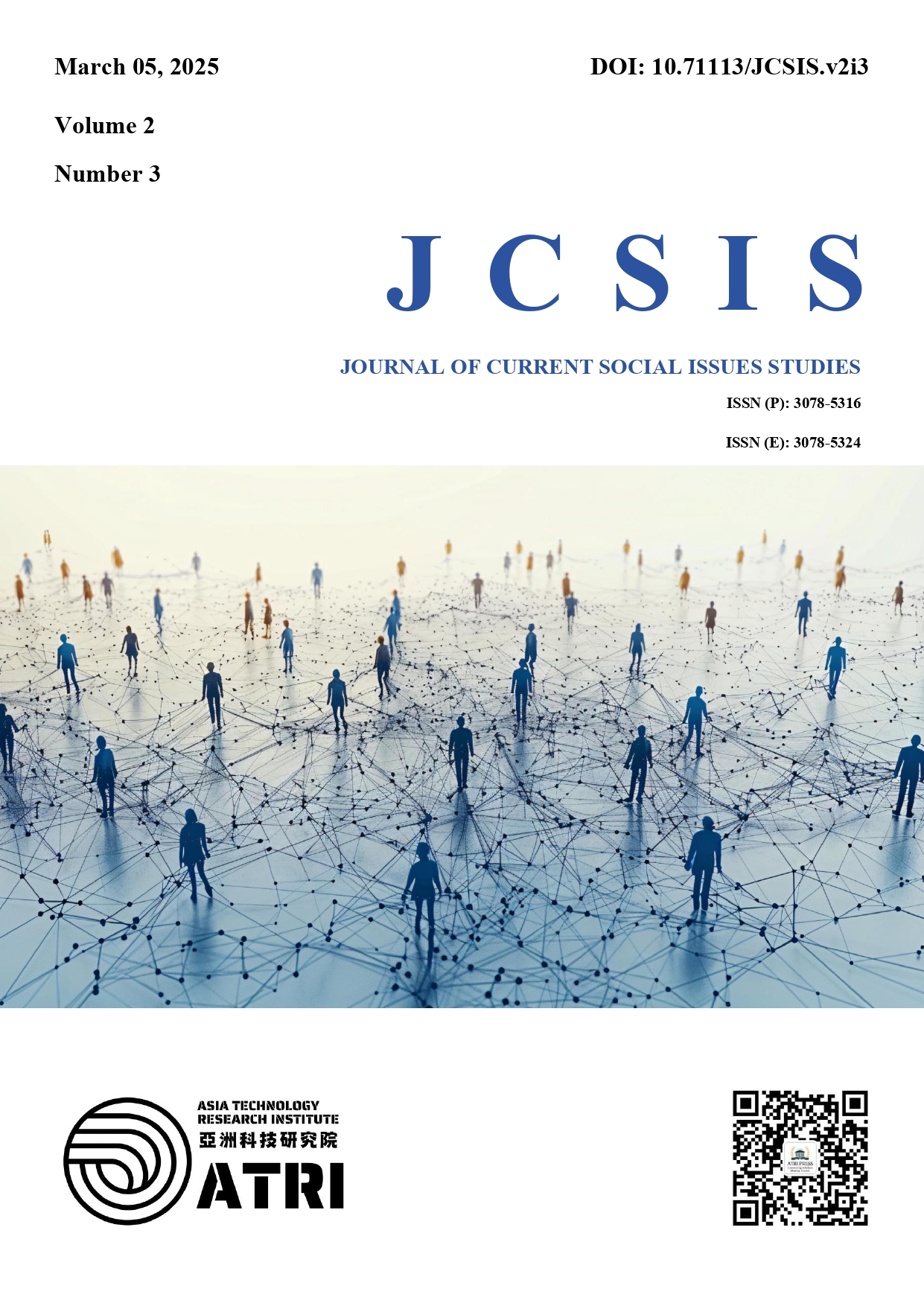Leveraging AI to Ignite Innovation in Small and Medium Enterprises: Challenges and Opportunities
Small and Medium Enterprises use AI
DOI:
https://doi.org/10.71113/JCSIS.v2i3.159Keywords:
AI, SMEs, Innovation, Policy Supports, CompetitivenessAbstract
Small and medium enterprises (SMEs) form the backbone of many economies, yet they often struggle to remain competitive and innovative under resource constraints. Rapid advances in artificial intelligence (AI) offer fresh possibilities for SMEs to transform their operations, discover untapped market segments, and foster resilient business models. AI tools can enhance decision-making and reduce operational inefficiencies, from automating repetitive processes to generating predictive insights. At the same time, ethical considerations and data privacy concerns underscore the importance of implementing AI responsibly. By embracing cross-sector collaboration, developing robust training programs, and advocating for supportive policy frameworks, SMEs can harness AI’s immense potential without compromising social values or organizational integrity. This paper highlights both the opportunities and challenges AI poses, proposing actionable strategies that enable SMEs to drive sustainable, inclusive growth.
References
[1]Baabdullah, A. M., Alalwan, A. A., Slade, E. L., Raman, R., & Khatatneh, K. F. (2021). SMEs and artificial intelligence (AI): Antecedents and consequences of AI-based B2B practices. Industrial Marketing Management. https://doi.org/10.1016/j.indmarman.2021.09.003
[2]Babina, T., Fedyk, A., He, A., & Hodson, J. (2024). Artificial intelligence, firm growth, and product innovation. Journal of Financial Economics. https://doi.org/10.1016/j.jfineco.2023.103745
[3]Baum, S. D. (2021). Artificial Interdisciplinarity: Artificial Intelligence for Research on Complex Societal Problems. Philosophy and Technology. https://doi.org/10.1007/s13347-020-00416-5
[4]Bettoni, A., Matteri, D., Montini, E., Gladysz, B., & Carpanzano, E. (2021). An AI adoption model for SMEs: A conceptual framework. IFAC-PapersOnLine. https://doi.org/10.1016/j.ifacol.2021.08.082
[5]Brazinskas, S., & Beinoravičius, J. (2014). SMEs and Integration Driving Factors to Regional and Global Value Chains. Procedia - Social and Behavioral Sciences. https://doi.org/10.1016/j.sbspro.2013.12.950
[6]Chan, K. S., & Zary, N. (2019). Applications and Challenges of Implementing Artificial Intelligence in Medical Education: Integrative Review. JMIR Medical Education. https://doi.org/10.2196/13930
[7]Gao, R. X., Krüger, J., Merklein, M., Möhring, H.-C., & Váncza, J. (2024). Artificial Intelligence in manufacturing: State of the art, perspectives, and future directions. CIRP Annals, 73(2), 723–749. https://doi.org/https://doi.org/10.1016/j.cirp.2024.04.101
[8]Haefner, N., Wincent, J., Parida, V., & Gassmann, O. (2021). Artificial intelligence and innovation management: A review, framework, and research agenda✰. Technological Forecasting and Social Change. https://doi.org/10.1016/j.techfore.2020.120392
[9]Hermann, E., & Puntoni, S. (2024). Artificial intelligence and consumer behavior: From predictive to generative AI. Journal of Business Research, 180, 114720. https://doi.org/10.1016/j.jbusres.2024.114720
[10]Keuschnigg, M., Lovsjö, N., & Hedström, P. (2018). Analytical sociology and computational social science. Journal of Computational Social Science. https://doi.org/10.1007/s42001-017-0006-5
[11]Kopalle, P. K., Gangwar, M., Kaplan, A., Ramachandran, D., Reinartz, W., & Rindfleisch, A. (2022). Examining artificial intelligence (AI) technologies in marketing via a global lens: Current trends and future research opportunities. International Journal of Research in Marketing. https://doi.org/10.1016/j.ijresmar.2021.11.002
[12]Mariani, M. M., Machado, I., Magrelli, V., & Dwivedi, Y. K. (2023). Artificial intelligence in innovation research: A systematic review, conceptual framework, and future research directions. Technovation. https://doi.org/10.1016/j.technovation.2022.102623
[13]Miller, T. (2019). Explanation in artificial intelligence: Insights from the social sciences. Artificial Intelligence. https://doi.org/10.1016/j.artint.2018.07.007
[14]Naeem, R., Kohtamäki, M., & Parida, V. (2024). Artificial intelligence enabled product–service innovation: past achievements and future directions. Review of Managerial Science. https://doi.org/10.1007/s11846-024-00757-x
[15]Peretz-Andersson, E., Tabares, S., Mikalef, P., & Parida, V. (2024). Artificial intelligence implementation in manufacturing SMEs: A resource orchestration approach. International Journal of Information Management, 77, 102781. https://doi.org/10.1016/j.ijinfomgt.2024.102781
[16]Radziwon, A., & Bogers, M. (2019). Open innovation in SMEs: Exploring inter-organizational relationships in an ecosystem. Technological Forecasting and Social Change. https://doi.org/10.1016/j.techfore.2018.04.021
[17]Schwaeke, J., Peters, A., Kanbach, D. K., Kraus, S., & Jones, P. (2024). The new normal: The status quoof AI adoption in SMEs. Journal of Small Business Management, 1–35. https://doi.org/10.1080/00472778.2024.2379999
[18]Soni, N., Sharma, E. K., Singh, N., & Kapoor, A. (2020). Artificial Intelligence in Business: From Research and Innovation to Market Deployment. Procedia Computer Science. https://doi.org/10.1016/j.procs.2020.03.272
[19]Teng, X., Wu, Z., & Yang, F. (2022). Impact of the Digital Transformation of Small- and Medium-Sized Listed Companies on Performance: Based on a Cost-Benefit Analysis Framework. Journal of Mathematics. https://doi.org/10.1155/2022/1504499
[20]Timan, T., & Mann, Z. (2021). Data protection in the era of artificial intelligence: Trends, existing solutions and recommendations for privacy-preserving technologies. The Elements of Big Data Value: Foundations of the Research and Innovation Ecosystem. https://doi.org/10.1007/978-3-030-68176-0_7
[21]Toorajipour, R., Sohrabpour, V., Nazarpour, A., Oghazi, P., & Fischl, M. (2021). Artificial intelligence in supply chain management: A systematic literature review. Journal of Business Research. https://doi.org/10.1016/j.jbusres.2020.09.009
[22]Wodecki, A. (2019). Value Creation and Competitive Advantage Models. Artificial Intelligence in Value Creation. https://doi.org/10.1007/978-3-319-91596-8_1
Downloads
Published
How to Cite
Issue
Section
License
Copyright (c) 2025 Peiqian Wu, Yingze Zhu, Wenli Chen, Yongchao Du

This work is licensed under a Creative Commons Attribution 4.0 International License.























